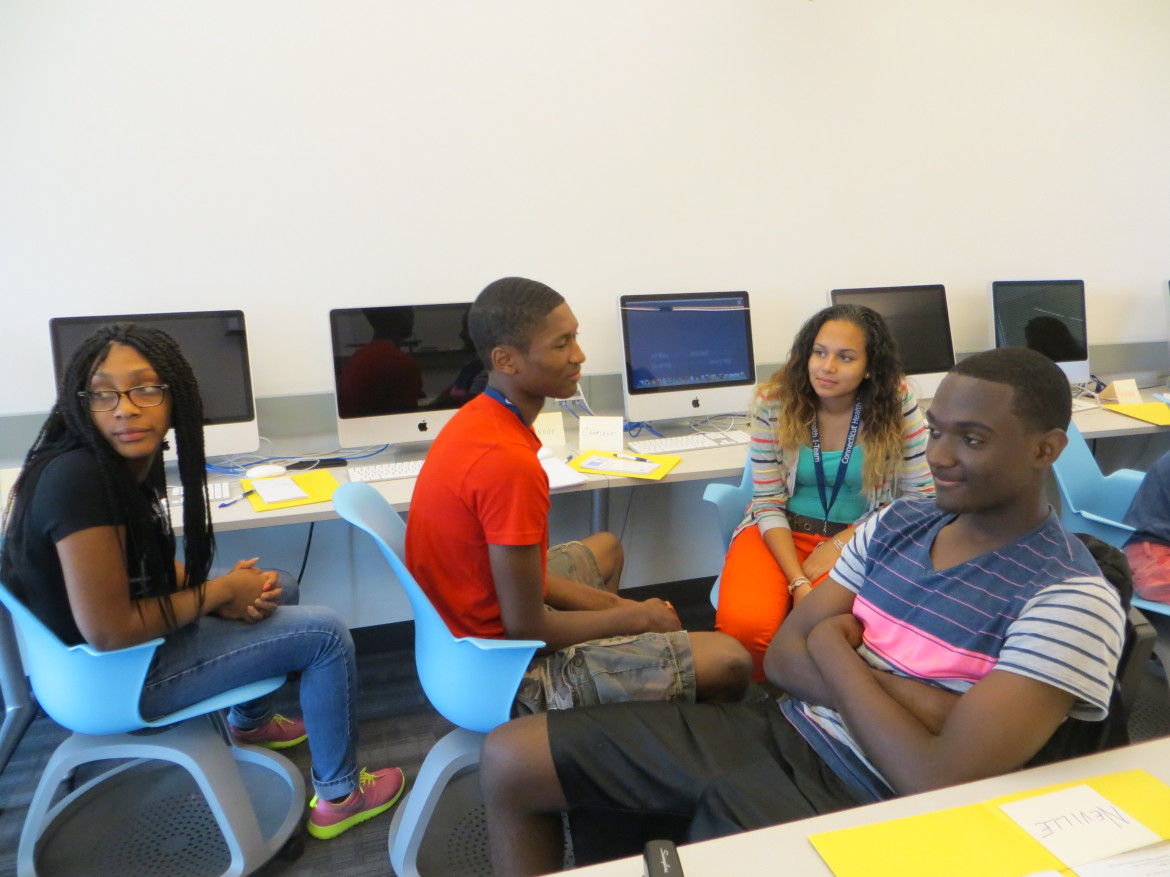New Haven students who attend schools with small class sizes of 15 or less tend to have higher SAT scores than those who are in larger classes, according to state Department of Education data.

Maya, left, in class at UConn.
Achievement First Amistad High School averages 13 students in a class and averaged a combined math and reading score of 859.6. Another school that also averages 13 students in a class, Sound High School, averaged an 883 combined score.
The city’s largest secondary schools, James H. Hillhouse High School and Wilbur Cross High School – with an average of about 22 students per class – scored 725.3 and 821.7 combined scores respectively.
Claudia Roach, 17, a senior at Wilbur Cross, prefers a small class because large classes are “too big,” and she doesn’t “get enough attention from the teacher.”
“I don’t know what I’m doing, and it is reflected in my grades and class work,” said Roach.
Chanelle Rainey, 16, and a senior at Hillhouse, said, “There are times I go home confused because I have to seek help on my own because there are many other students in the class.”
The National Education Policy Center (NPEC) has advocated for small class sizes, for years. On its website, the center says, “…small classes have been found to have positive impacts not only on test scores during the duration of the class-size reduction experiment, but also on life outcomes in the years after the experiment ended.’’
“The class size reflects a student’s ability to achieve in their adulthood,’’ the NEPC said.
“Small classes help students to feel connected to the teacher rather than larger classes in which students may feel overwhelmed.”
“Students in small classes get more attention from the teacher in a powerful way,” says Lauren Cohen, a summer program coordinator at Amistad high.
The NEPC said that studies show, “In larger class sizes teachers used class groupings, and these classes had lower achievement, while in smaller classes it was more common to teach to the whole class.’’
Small classes provide “… more opportunity to be successful and more space. It is easier for students to participate and asks questions,” says Cohen.
“The teaching technique varies among the number of students in a class. Class groupings limit a student’s ability to fully thrive within the classroom. Moreover, teaching whole class gives students the opportunity to learn directly from the teacher,’’ the NEPC website said.
Large classes make it easy for students “to not understand and slip through cracks,” says Cohen.
Students in smaller classes have better test taking skills because they get more attention from the teacher, added Cohen.
The SAT is the most important test for juniors in high school because it is one of several factors reviewed by admissions officers for acceptance into college.
It is “… the first step toward higher education for students,” according to College Board.
Maya Covington is a student at Achievement First Amistad High School in New Haven.
